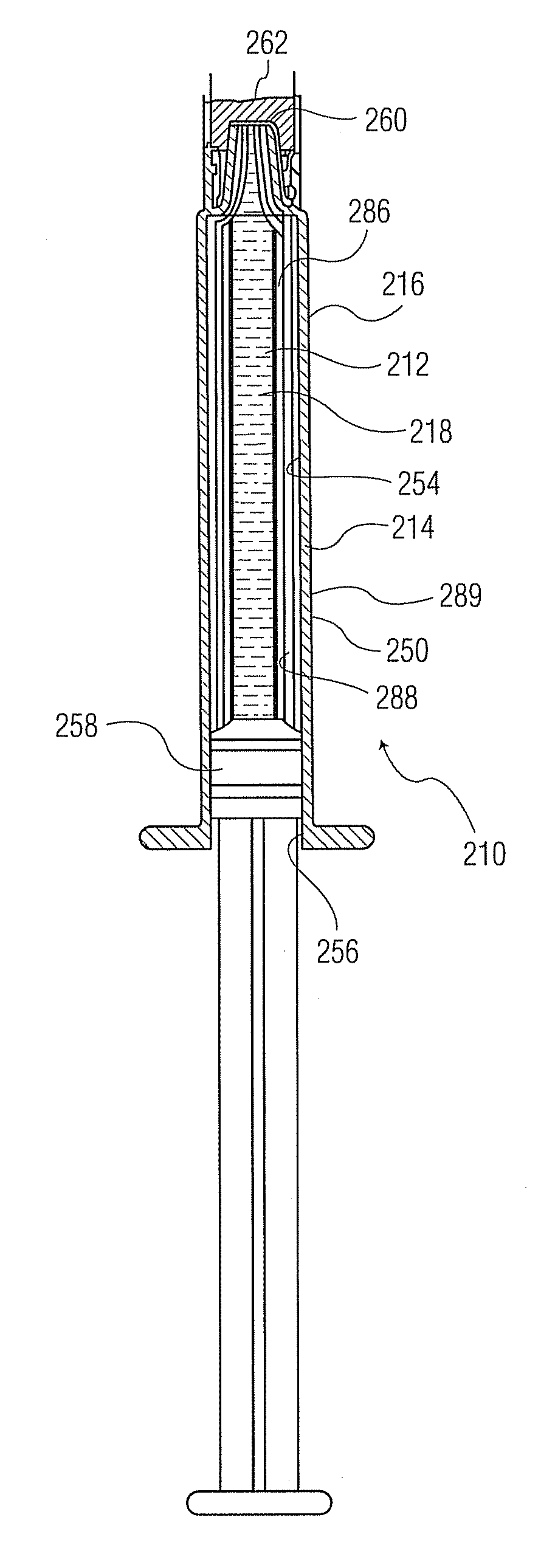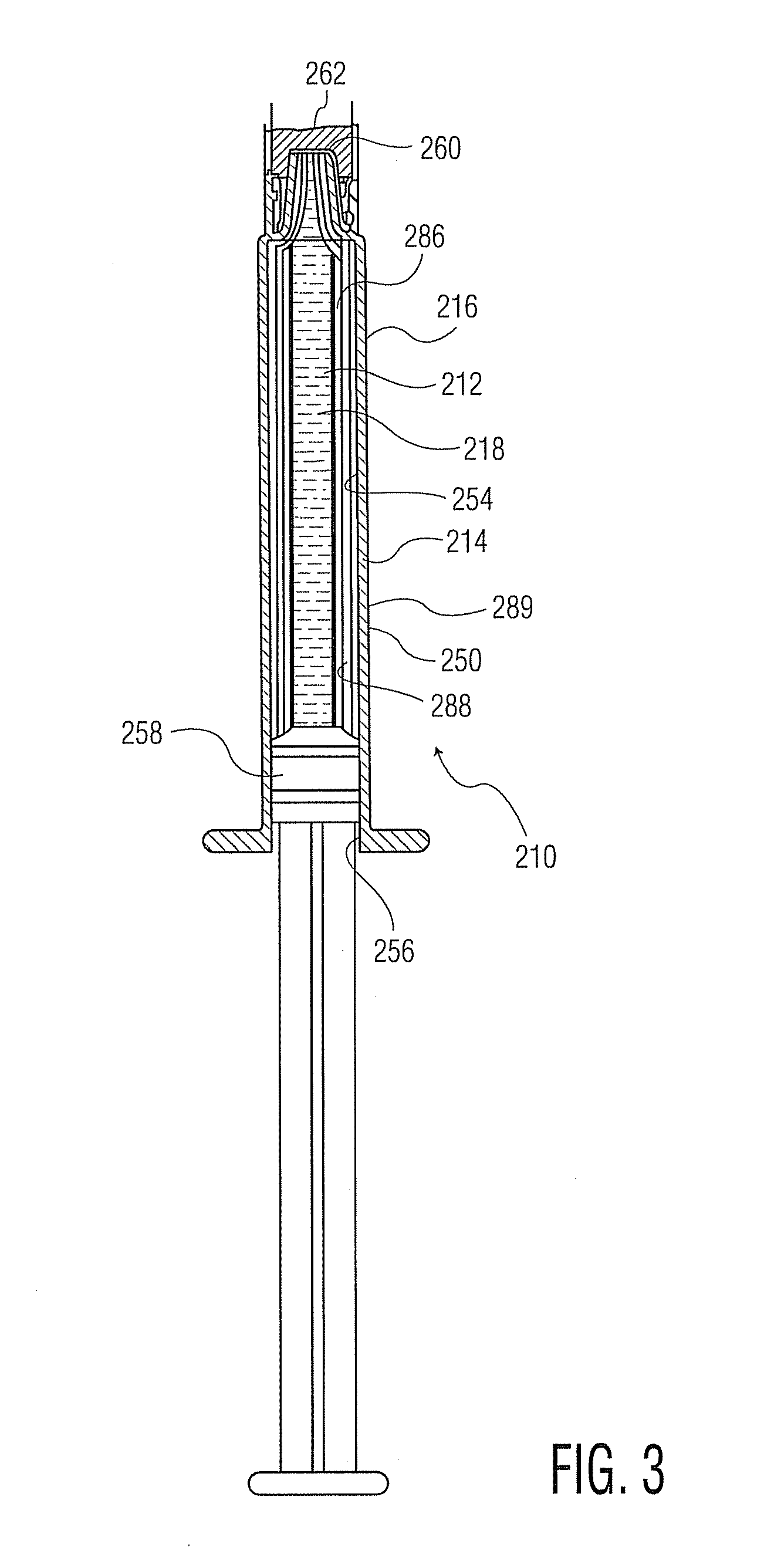Trilayer coated pharmaceutical packaging with low oxygen transmission rate
a technology of low oxygen transmission rate and pharmaceutical packaging, which is applied in the field of barrier coating surfaces, can solve the problems of reducing the useful shelf life of the package, limiting the use of primary pharmaceutical packaging, and reducing the barrier
- Summary
- Abstract
- Description
- Claims
- Application Information
AI Technical Summary
Benefits of technology
Problems solved by technology
Method used
Image
Examples
example 1
[0127]Examples of specific coating parameters that have been used for a 1 mL syringe and 5 mL vial are shown in the PECVD Trilayer Process Specific Parameters Tables 5 (1 mL syringe) and 6 (5 mL vial):
PECVD Trilayer Process SpecificParameters Table 5 (1 mL syringe)ParameterUnitsTieBarrierProtectionPowerW7014070TMDSOsccm4None 4FlowHMDSOsccmNone1.56NoneFlowO2 Flowsccm220 2Argon Flowsccm80080Ramp TimesecondsNoneNoneNoneDepositionseconds2.52010TimeTubeTorr10.59 1Pressure
PECVD Trilayer Process Specific Parameters Table 6 (5 mL vial)ParameterUnitsAdhesionBarrierProtectionPowerW204020TMDSOsccm202FlowHMDSOsccm030FlowO2 Flowsccm1501Argon Flowsccm20020Ramp Timeseconds022Depositionseconds2.51010TimeTubeTorr0.851.290.85Pressure
[0128]The O-parameter and N-parameter values for the pH protective coating or layer applied to the 1 mL syringe as described above are 0.34 and 0.55, respectively.
[0129]The O-parameter and N-parameter values for the pH protective coating or layer applied to the 5 mL vial ...
example 2
[0130]Referring to FIG. 7 and Table 7, Example 2, the thickness uniformity at four different points along the length of a 1 mL syringe with a staked needle (present during PECVD deposition) and the indicated trilayer coating (avg. thicknesses: 38 nm adhesion or tie coating or layer; 55 nm barrier coating or layer, 273 nm pH protective coating or layer) is shown. The table shows individual layer thicknesses at the four marked points, showing adequate thickness of each layer at each point along the high profile syringe barrel.
TABLE 7Example 2Adhesion LayerBarrier LayerpH Protection LayerSyringeThicknessThicknessThicknessLocation(nm)(nm)(nm)14675343238552733864749344225287
[0131]Referring to FIG. 8, the plot maps the coating thickness over the portion of the cylindrical inner surface of the barrel shown in FIG. 7, as though unrolled to form a rectangle. The overall range of thickness of the trilayer coating is 572 plus or minus 89 nm.
[0132]FIG. 9 is a photomicrograph showing a cross-sec...
example 3
[0134]FIG. 10 shows a trilayer coating distribution for another syringe, showing very little variation in coating thickness, with the great majority of the surface coated between 150 and 200 nm thickness of the trilayer, with only a small proportion of the container coated with less than 150 nm of the trilayer.
PUM
| Property | Measurement | Unit |
|---|---|---|
| thick | aaaaa | aaaaa |
| thick | aaaaa | aaaaa |
| thick | aaaaa | aaaaa |
Abstract
Description
Claims
Application Information
 Login to View More
Login to View More - R&D
- Intellectual Property
- Life Sciences
- Materials
- Tech Scout
- Unparalleled Data Quality
- Higher Quality Content
- 60% Fewer Hallucinations
Browse by: Latest US Patents, China's latest patents, Technical Efficacy Thesaurus, Application Domain, Technology Topic, Popular Technical Reports.
© 2025 PatSnap. All rights reserved.Legal|Privacy policy|Modern Slavery Act Transparency Statement|Sitemap|About US| Contact US: help@patsnap.com



